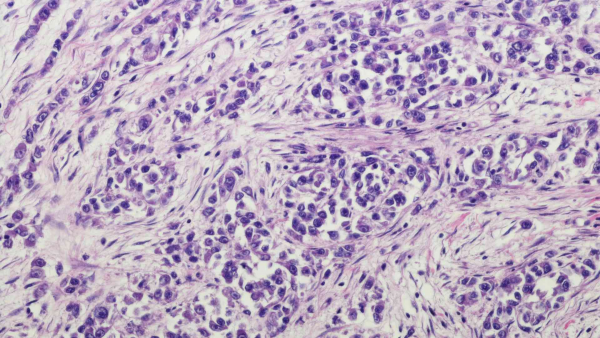What Are Sarcomas?
Sarcomas are a rare type of cancer that typically originates from connective tissues. Sarcomas are malignant (cancerous) tumors that can develop from bones, muscles, fat, blood vessels, and other connective tissues. There are two main types of sarcomas: soft tissue sarcomas and bone sarcomas.
Soft Tissue Sarcomas
Soft tissue sarcomas are tumors that arise from the muscles, fat, nerves, blood vessels, and other connective tissues in the body. These sarcomas can occur in the arms, legs, trunk, and head-neck region. Subtypes of soft tissue sarcomas include liposarcoma, leiomyosarcoma, and fibrosarcoma, among others. They are more commonly observed in adults.
Bone Sarcomas
Bone sarcomas are tumors that originate from bones. The most common types of bone sarcomas include:
-
Osteosarcoma (arising from bone tissue)
-
Ewing Sarcoma (arising from bone and soft tissue)
-
Chondrosarcoma (arising from cartilage tissue)
Bone sarcomas are more frequently seen in children.
Characteristics of Sarcomas
Sarcomas are classified into various subtypes based on cell type, tumor size, spread, and other factors. They often do not cause symptoms initially, but as they grow, they may lead to symptoms such as:
-
Swelling
-
Pain
-
Mass formation
-
Painful movement
-
Nerve compression symptoms
Treatment of Sarcomas
Sarcoma treatment generally involves surgery, radiotherapy, and chemotherapy. The treatment plan depends on the type and stage of the tumor, as well as the patient’s overall health.
Although sarcomas are rare and typically aggressive cancers, early diagnosis and appropriate treatment can significantly improve outcomes. Diagnosis and treatment processes for sarcomas should be managed by an oncologist (cancer specialist).
Symptoms of Sarcomas
The symptoms of sarcomas vary depending on the type, size, location, and other factors. However, sarcomas often do not show symptoms in the early stages. As the tumor grows, the following symptoms may appear:
-
Swelling or Lump Formation: Sarcomas often form a noticeable swelling or mass in the body. This can usually be felt depending on the tumor's size.
-
Pain or Tenderness: Sarcomas may be painful, especially when touched or pressed. The pain usually depends on the tumor’s size, location, and whether it affects nerves.
-
Pain in Joints or Bones: Bone sarcomas are often painful, and the pain may worsen at rest. Sarcomas affecting the joints can also cause pain.
-
Loss of Movement or Restriction: Sarcomas can affect muscles, joints, or bones, leading to restricted movement, depending on the tumor’s size and location.
-
Weight Loss: Some sarcoma patients may experience weight loss due to tumor growth and metabolic changes.
-
Fatigue and Weakness: Advanced-stage sarcomas can lead to increased energy consumption in the body, causing general fatigue and weakness.
-
Local Nerve Compression: Sarcomas may affect nerves, causing numbness, tingling, or weakness due to local nerve compression.
Because sarcomas are rare, their symptoms can be mistaken for other health problems. If a person experiences these symptoms or notices a concerning mass, it is important to consult a healthcare professional and undergo further diagnostic tests if necessary. Sarcoma diagnosis typically involves biopsy and imaging tests.
Who Is at Risk for Sarcomas?
-
Patients Who Have Received Radiotherapy: Individuals who have undergone radiotherapy for any reason are at higher risk for developing sarcomas.
-
Genetic Disease History: Individuals with a family history of inherited conditions such as Von Recklinghausen disease (neurofibromatosis), Gardner syndrome, Werner syndrome, tuberous sclerosis, nevoid basal cell carcinoma syndrome, Li-Fraumeni syndrome, or retinoblastoma are at increased risk for developing sarcomas.
-
Chemical Exposure: Exposure to chemicals such as vinyl chloride monomer (used in certain plastics), dioxin, or arsenic can increase the risk of sarcomas.
-
Long-Term Lymphedema in the Arms or Legs: Prolonged lymphedema can increase the risk of developing sarcomas.
Genetic Tests for Sarcomas
Genetic testing for sarcomas involves laboratory tests that identify genetic changes or mutations in tumors. The genetic profile of sarcomas varies, and these tests are important for identifying specific genetic factors, determining treatment options, and understanding the genetic basis of the disease. Genetic testing can also be used to assess familial sarcoma risk, identify carrier status, and provide genetic counseling to individuals and families.
Sarcomas often exhibit a variety of genomic changes, which can influence tumor biology and behavior. Genetic testing for sarcomas is typically used for the following purposes:
-
Identification of Genetic Mutations: Genetic tests analyze tumor tissue samples to detect specific gene mutations or changes.
-
Determining Targeted Treatment Options: Test results can guide the use of targeted therapies based on specific genetic alterations in the tumor.
-
Assessing Immunotherapy Potential: Some sarcomas may respond to immunotherapy. Genetic testing can help evaluate the tumor’s potential response to immune-based treatments.
-
Evaluating Familial Risk: Genetic testing can assess familial sarcoma risk. Individuals with certain genetic mutations may have an increased risk of developing familial sarcomas.
-
Identifying Carrier Status: Carrier testing can inform families about options such as in vitro fertilization and preimplantation genetic diagnosis.
Genetic testing for sarcomas is usually performed by analyzing tumor biopsy samples or tissues obtained through surgery. The specific genes or regions tested may vary depending on the type of sarcoma and the clinical context. Test results can influence the patient’s treatment plan and prognosis. A healthcare professional, such as an oncologist or a geneticist, should guide the decision-making process for genetic testing.
Genetic Screening Tests Used for Sarcomas
-
TP53, RB1, MDM2, CDK4 (Immunohistochemistry Staining)
-
P53 (TP53) (Sequencing Analysis)
-
RB1 (Sequencing Analysis)
-
ATRX (Sequencing Analysis)
-
MSI (Microsatellite Instability)
If a genetic syndrome (such as Werner syndrome, Bloom syndrome) is suspected, targeted testing for specific genes such as WRN, BLM, APC, and CDKN1C may be performed. Additionally, panel-based testing for genes associated with sarcomas can be conducted.
RNA Fusion (Gene Fusion) Panel
This method involves extracting RNA from cancer tissue and using Next-Generation Sequencing (NGS) to analyze all RNA sequences. It identifies fusions and some deletions and amplifications. RNA sequencing plays a critical role in diagnosis, determining treatment strategies, identifying potential therapeutic drugs, and assessing prognostic markers.


















